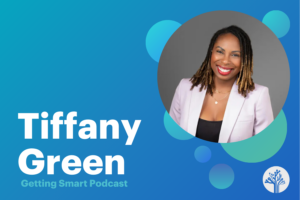From Formative Assessment to Tracking Student Mastery: The Road to Competency-Based Instruction

Once upon a time, classrooms were filled with students who were expected to learn the same thing on the same day. Students rushing to their seats at the first sound of a bell, sitting quietly, taking notes, practicing independently (struggling silently), proving understanding through end of unit tests, and awaiting for their instructors cue to move forward. If you walk into the classrooms of today, you may still see this scene. BUT, in more and more classes across the country, you will see something very different; you will see classrooms that are dynamic and increasingly next gen, classrooms that are breaking the mold in an effort to make the learning experience one that is both personalized and engaging for students.
Fundamental to competency-based learning and any attempt to personalize is mastery tracking, fed by formative assessment. In Formative Assessment to Initiate Learning, we touch on the idea that formative assessment is an ideal starting point on the path to personalization. Next, we dive into why using these results to track mastery is so important.
Learning Productively
Personalization and a competency-based model lead to learning more productively. Looking at a traditional school day, how much time is wasted? How much time is spent on efforts that do not link to directly to instruction? This is not to assume that non-academic events are all a waste of time, this is often where life skills are experienced and memories are made, SO lets focus on the actual instructional time, of instructional time, how frequently are all kids getting the right subject at the right time with the right support?
Realistically, 5% – 10% a typical day is spent on instruction that is targeted. What if we flip that so that learning at the right level in the right the way occupies the majority of the day? Then we optimize customization, increase productivity, maximize motivation, boost persistence — all while radically improving achievement.
Why Track Student Mastery
If we want all kids to reach higher standards faster, then learning productivity is key. We must understand who our students are as thinkers and where they are at academically in order to maximize a sequences of experiences that are tailored for them. If we can do this well, then we can get kids to succeed at higher levels. At the core of this is tracking student mastery. And here are 10 reasons why:
- To Motivate. We know from the casual game space that calibration (just the right challenge – think zone of proximal development) and gamification (layering combination of strategies to boost persistence) increases dedication to results. Mastery tracking can achieve similar results by getting into intrinsic (achievement of goals, learning growth) and extrinsic motivation (improved feedback, leader-board).
- To Build Student Agency. Student agency is identified as one of three key factors to young adult success in Foundations for Young Adult Success, from the University of Chicago Consortium on Chicago School Research. The authors define agency as “the ability to make choices about and take an active role in one’s life path, rather than solely being the product of one’s circumstances. Agency requires the intentionality and forethought to derive a course of action and adjust that course as needed to reflect one’s identity, competencies, knowledge and skills, mindsets, and values.” Agency is another pathway to motivation. Mastery tracking supports student ownership of learning by creating a clear picture of strengths and weaknesses. With mastery tracking it is easy for students to set clear goals and build out plans to achieve them.
- To Foster a Growth Mindset. When mastery of content outweighs all other elements, there is an increased capacity to improve. When a student is failing, even though they understand the concepts, but because they have 12 missing assignments, she can feel stuck and wonder the value in moving forward. Focusing instead on mastering concepts and understanding how they relate to the world encourages personalized growth and fosters a culture where mistakes are not detrimental, but rather a part of the learning process.
- To Support Anytime, Anywhere Learning. Mastery Tracking helps utilize learning time efficiently, linking formal and informal learning opportunities. It opens the door to and makes it easier for powerful learning to happen anytime and anywhere. If a student/parent/teacher know how a student is doing on academic skills, it makes it possible to find appropriate resources and create customized learning experiences.
- To Personalize. Monitoring progress increases opportunities for the right lesson at the right time. At the teacher level, tracking mastery allows teachers to create groups and experiences for groups of students that are unique to their needs. At the student’s level, it allows them to make decisions about the supports that need to be successful.
- To Make Informed Decisions. Tracking mastery provides the data necessary to make better decisions. Schools and districts really can’t do any form of testing hypothesis around student success without a good tracking system that allows for short cycle trials. At the systemic level, it allows you to do real time progress monitor of individual students and groups of students adopt a continuous improvement mindset. With a system that clearly identifies and links to areas of improvement, students and teachers can identify gaps and pull supports from a variety of resources, such as videos from YouTube or Kahn Academy and CCSS aligned resources from OpenEd.
- To Advance Edtech. Mastery tracking helps curriculum developers and edtech providers better understand their ability to support students in academic growth. They can benefit from short cycle trials and pinpoint investment.
- To Give Students Immediate Feedback. Millennials are used to and expect immediate feedback from their online games; which in terms means they prefer it outside gaming as well. The current paradigm of waiting a couple of weeks for grades to be posted is frustrating for students who expect otherwise.
- To Create A “Millennialized” Experience. Excuse the made up word, but you get the point. Tracking mastery is the next generation of grading and it is perfect for millennials. It provides a real time snapshot of progress, guides them on what needs to happen next and creates opportunity for collaboration through peer experts and small group work. In addition it can act as a healthy dose of competition for a group that is used to limited privacy. They seem to like sharing scores on low stake assessments and appreciate the ability to take pride in their work and encourage others.
- To Realize Competency-Based Instruction. Tracking mastery is the backbone to a competency-based environment where students progress based on mastery of content.
With better and more comparable data, mastery tracking has the power to bring an end to the need for week long, end of year summative assessment. If we know with better certainty how kids are doing, it will become less and less necessary to inflict kids and schools with heavy weight testing. Mastery tracking will drive the shift to a more personalized environment in which assessment is not only part of instruction, but also part of learning, an environment where we can better support and celebrate student achievement. When it comes to the road to competency-based learning, assessing and tracking mastery is a big deal, to quote Tom Vander Ark “it is the whole enchilada.”
This is the 2nd post in a 3 part blog series on how personalization powers competency-based learning and is sponsored by OpenEd, the world’s largest resource library. For more, check out:






0 Comments
Leave a Comment
Your email address will not be published. All fields are required.